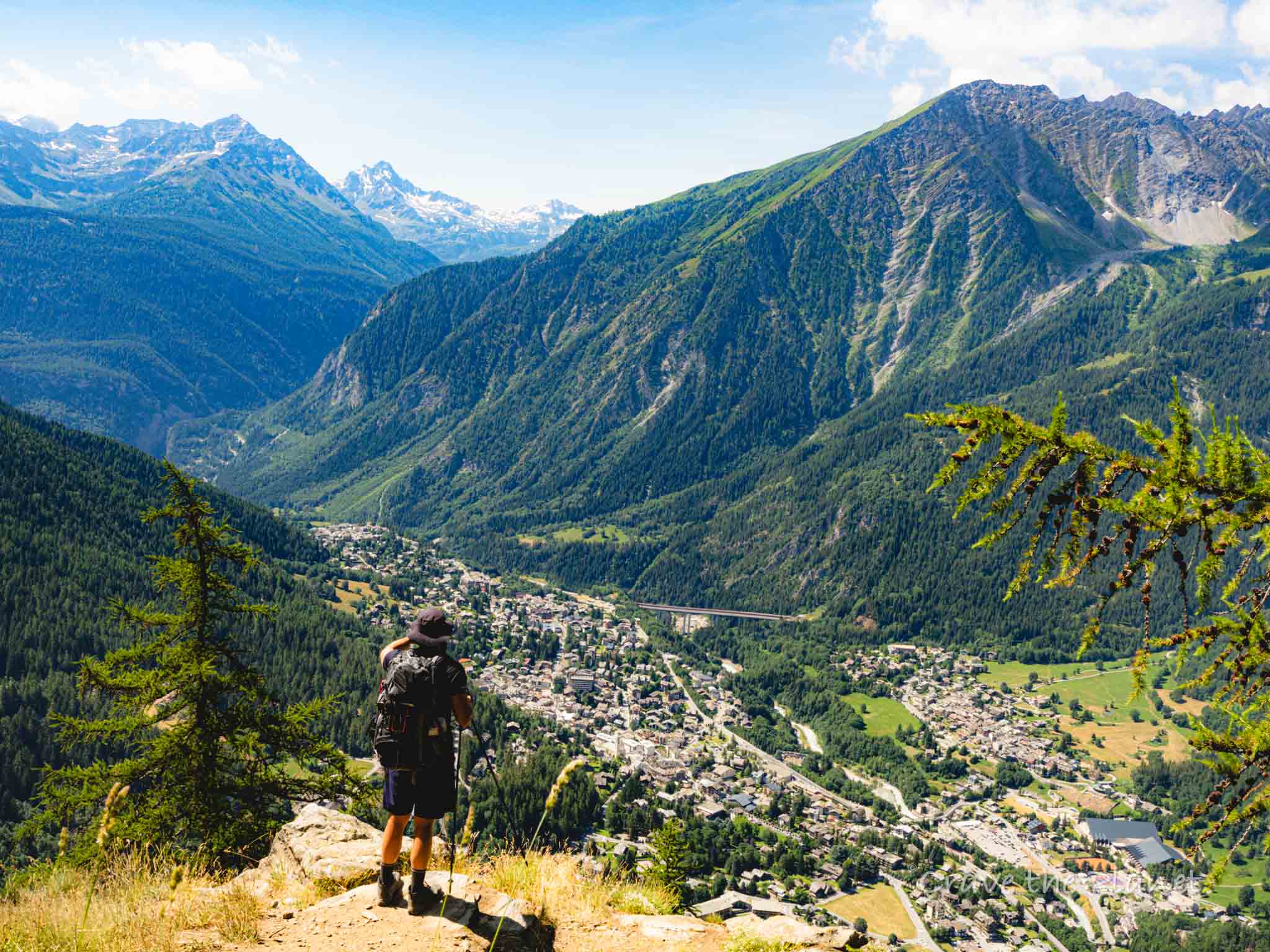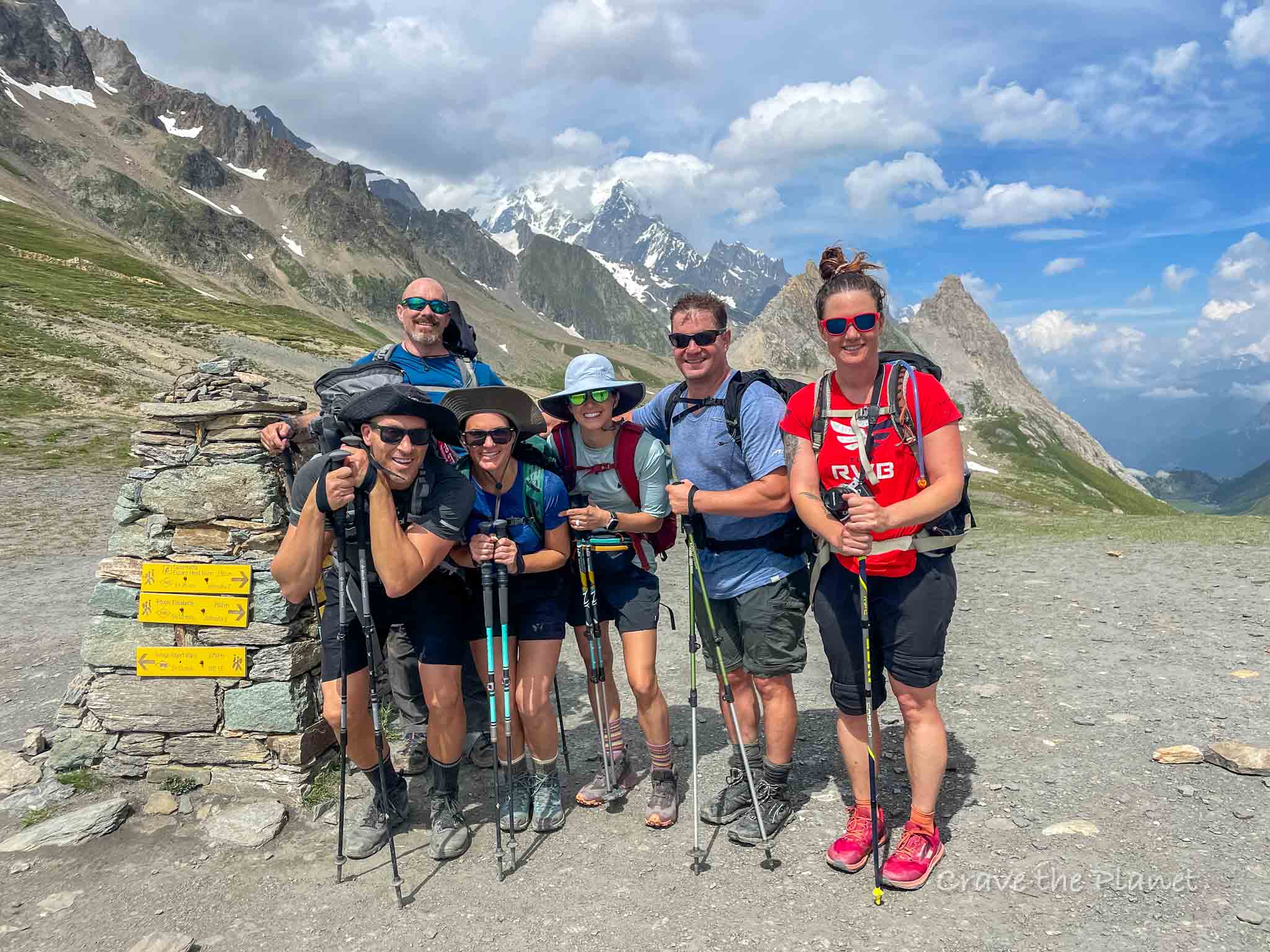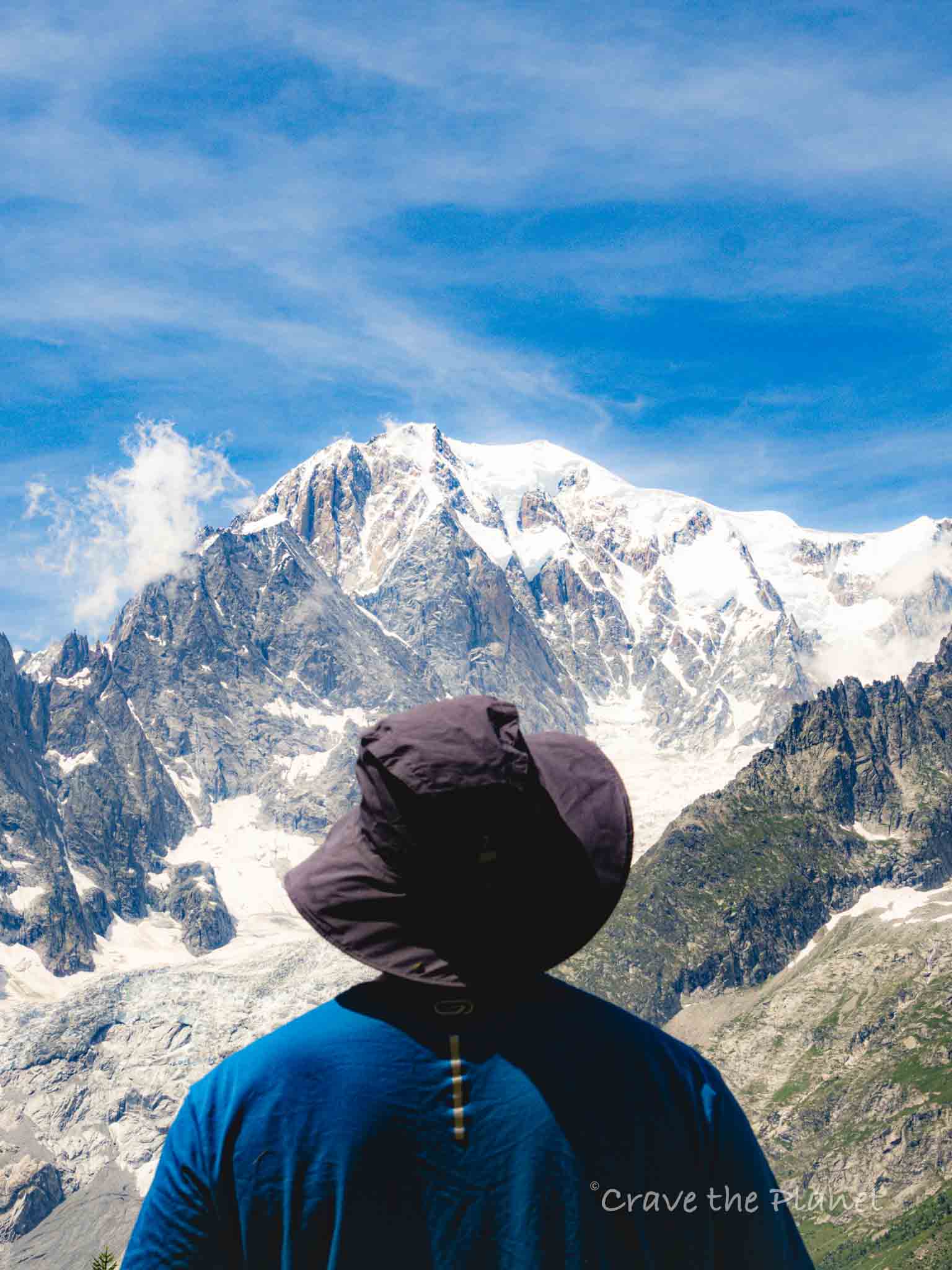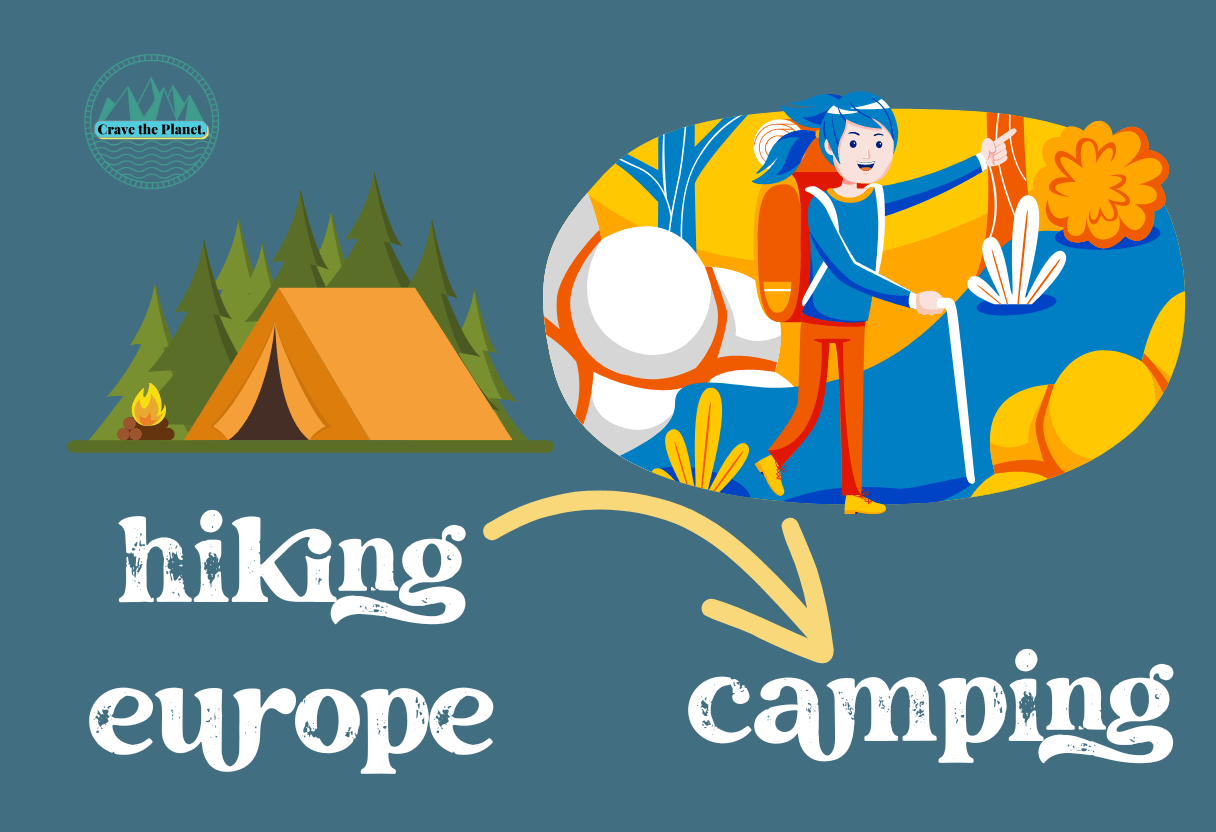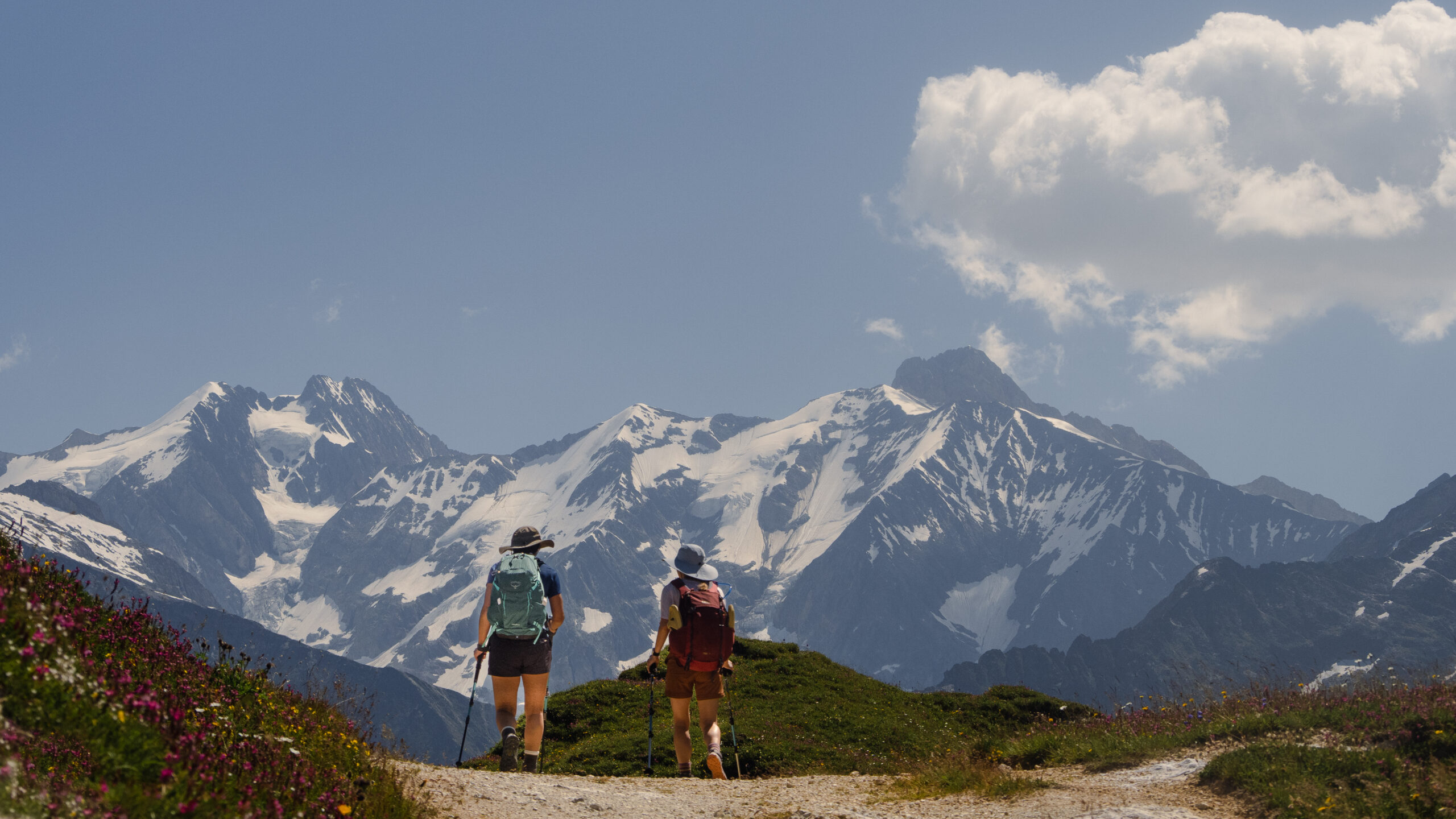We hiked the TMB in early July and had the most incredible experience and lucked out with the weather. But if you’re wondering when the best time to hike Mont Blanc is, you’ve come to the right place.
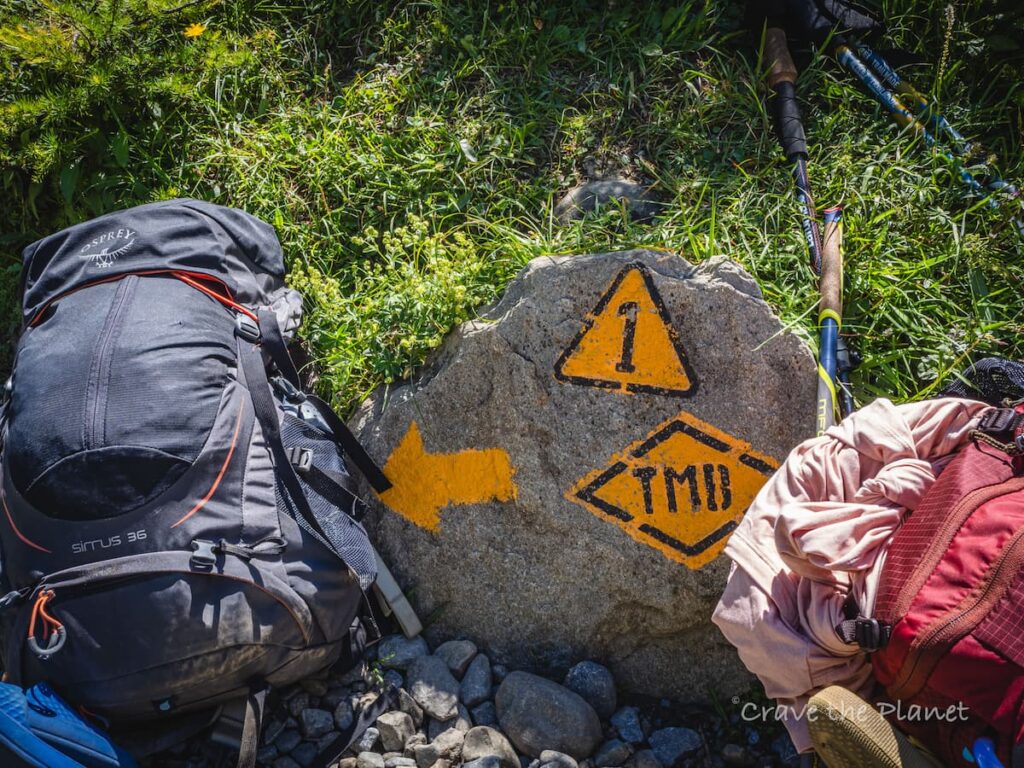
Not only is it one of the best trekking trails in Europe, it’s popular and does require planning in advance.
Understanding the Best Time to Hike Mont Blanc
When planning your trek to Mont Blanc, timing is crucial for an optimal experience. Summer, encompassing mid-June through September, is widely recognized as the best time to hike Mont Blanc, with favorable weather conditions that make the trails accessible and enjoyable.
Morgan’s Mont Blanc Hike Video
June marks the start of the hiking season with lingering patches of snow which can be a factor early in the month. The advantage of this time is the reduced crowd sizes and a still-quiet ambiance.
As you move into July and August, these are the peak months where you can expect the warmest temperatures and the most stable weather conditions. However, these months are also the busiest, meaning the trails will be more populated.
The daylight hours are longest during the summer, providing you with ample time to enjoy the scenery and cover more distance. Autumn arrives in September, offering a quieter trail again.
While weather can be less predictable this month, the trails are less crowded, and the changing foliage presents a unique beauty.
Here’s a simple guide:
- June: Cooler, some snow, fewer hikers
- July & August: Warmest temperatures, clear paths, highest number of trekkers
- September: Cooler, fewer hikers, changeable weather
Avoid spring and winter when trail conditions are hampered by snowfall and closures are common. Remember, always check the current weather conditions before you start your hike to ensure safety. With the right timing, your Mont Blanc adventure can be a memorable and exhilarating experience.
More Tour du Mont Blanc Travel Blogs
Preparing for the Mont Blanc Trek
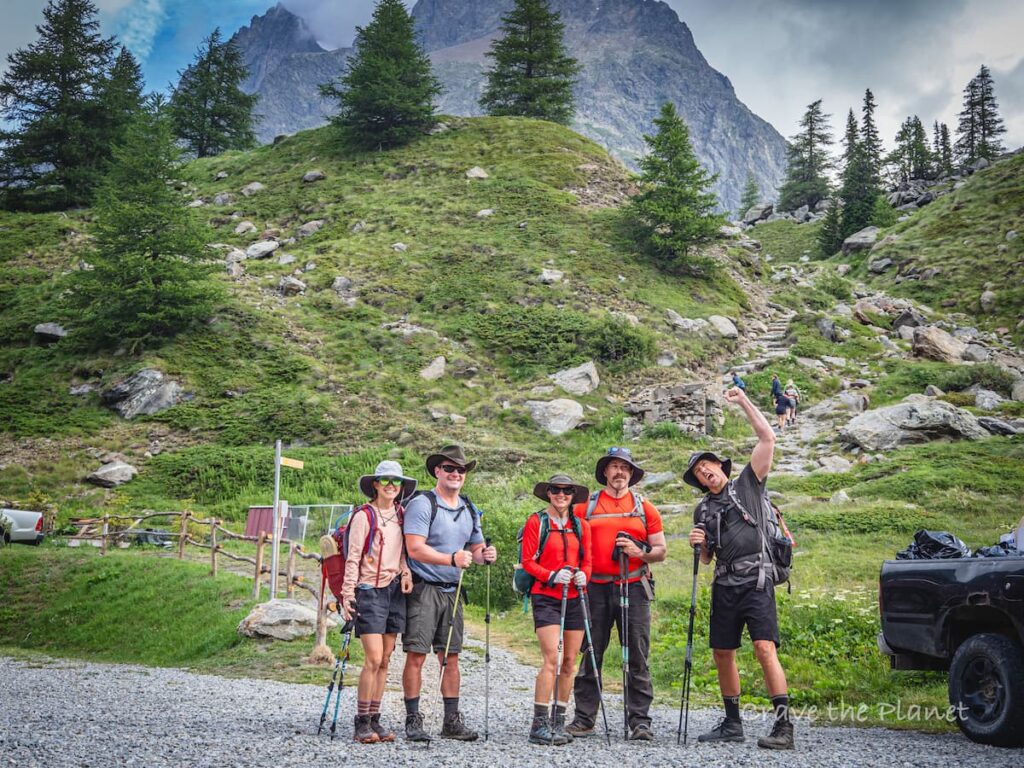
When setting off on the iconic Mont Blanc trek, adequate preparation is vital. You’ll need to carefully consider equipment, training, and logistics to ensure a safe and enjoyable journey around Western Europe’s highest peak.
Essential Gear and Clothing
Gear: For optimal comfort and safety, invest in quality hiking boots and trekking poles. Your boots should offer good support and be well broken-in to prevent blisters. Choose trekking poles for stability and to reduce strain on your knees.
Clothing: Dress in layers to adapt to the mountain’s varying temperatures. Include moisture-wicking underlayers, an insulating layer, and a waterproof outer layer. Don’t forget a hat and UV-protection sunglasses.
Physical Fitness and Training
To tackle the trek comfortably, work on developing your cardiovascular endurance, strength, and balance. Include long walks, cardio workouts, and strength training in your regimen. Start preparing months in advance to ensure you’re in good physical shape.
Navigation and Guides
Consider hiring a local guide to enhance your journey with insights into the local culture and history. If you opt for self-guiding, a detailed map and itinerary are essential. Familiarize yourself with the route’s navigation points beforehand.
Accommodation and Reservations
Plan your overnight stays well in advance. Options range from mountain huts to hotels and campsites. Booking refuges and huts can be done online, but it’s crucial to secure your reservations early as spaces fill up fast. You can store your luggage in Les Houches for your hiking trip.
Final Verdict: Ways to Book a Hut to Hut Hiking Trip
Self-Guided Tour Planning Service
- [Self-Guided] - You're on your own once you start
- Must book in Oct to Jan of year prior to hike
- Fully done for you route
- Service finds and books your huts
- Maps provided on app
- small groups (<10 typically)
- local Chamonix guides
- all transfers/breakfast/dinner/accommodations included
- airport transfer included
- stay in the insanely beautiful Rifugio Bonatti and other huts at high elevation
- Cheapest Option
- Most Freedom
- Take side excursions as you like
Camping
- campgrounds can be crowded
- reservations often needed in advance
- Wild camping is prohibited or limited by elevation
Food and Water Provisioning
While refuges will often offer meals, carry enough food for snacks and emergencies. Hydration is equally important — bring a reusable water bottle and know your refill points along the trek.
Safety Considerations
Understand the potential dangers such as avalanches and weather conditions. It’s also advisable to have knowledge of symptoms and remedies for altitude sickness. Carry a first-aid kit and a means of communication for emergencies.
Local Regulations and Impact
Respect the environment by adhering to local regulations. Minimize your impact by staying on marked trails, disposing of waste properly, and being considerate of wildlife and local communities.
Travel and Accessibility
Travel to Mont Blanc typically involves flying into Geneva, Milan, or Lyon, followed by a transfer to Chamonix. Transfers can be arranged via bus, rental car, or private services. The area is well serviced but planning is essential for a smooth journey.
Cultural Insights
Immerse yourself in the regional culture by learning about the history and customs of the Alpine communities. Engage with locals to enrich your trekking experience and gain unique insights.
Tips for Solo and Group Hikers
Solo hikers should check in with someone regularly, while those in groups should establish a pace suitable for all members. Whether alone or with others, always inform someone of your itinerary and expected return.
Mont Blanc Hike Itineraries
When planning your adventure in the Mont Blanc massif, choosing the right itinerary is essential for making the most of your hiking experience. Whether you’re seeking a full circuit or a day hike, each path provides a unique perspective of France, Italy, and Switzerland’s shared peaks.
Self-Guided Booking Option
Tour du Mont Blanc is a challenging circuit that spans across three countries, Switzerland, Italy, and France. It is approximately 105 miles long and can take up to 11 days to complete.
Overall Best Self Guided Planning Service: Alpenventures Unguided
This firm is great for finding secluded variants (like the one by the La Gorge gondola), private rooms, and providing maps. They have multiple ways to hike the TMB from a short 4 day to 11 days and everything in between. You can also arrange higher levels of "comfort", i.e. private rooms.
- Glacier Filled Raw Beauty
- Fun People
- Wildflowers and Wildlife
- Food is Local and Delicious
- Most Famous Trek in Europe
- Variable Hospitality
- Serious Elevation Gain
- Complicated and Tedious Bookings
- Not for Total Beginners
Tour Du Mont Blanc Circuit
The Tour du Mont Blanc (TMB) is a renowned circuit that guides you through three countries—France, Italy, and Switzerland—encompassing approximately 170 kilometers of trails. Starting from Chamonix in France or Courmayeur in Italy, you could complete the loop in about 11 days, with stops in charming locales such as Les Houches, Les Contamines, Champex, and La Fouly, experiencing diverse alpine environments along the way.
Alternate Routes and Sections
For those unable to commit to the full TMB, alternate routes and section hikes offer a customizable experience. You may prefer tackling smaller sections of the TMB, like the stretch from Chamonix to Champex, which still affords stunning vistas and cultural encounters. Each segment of the trail allows you to immerse yourself in the valleys and villages of the Mont Blanc region at your leisure.
Day Hikes and Shorter Treks
Day hikes and shorter treks provide an opportunity to witness the beauty of Mont Blanc without the multi-day commitment. Popular day hikes such as the hike up to Lac Blanc start near Chamonix and can be completed in a few hours, presenting breathtaking panoramic views for a brief yet memorable adventure.
Extended and Challenging Routes
For seasoned hikers looking for an extra challenge, extended and challenging routes like summit attempts to Mont Blanc itself are available. These demanding treks typically require advanced preparation, a high level of fitness, and often a mountain guide. Completing the ascent gives you the unparalleled satisfaction of conquering Europe’s highest peak.
| TL;DR From Author
Don’t let unexpected changes derail your travel plans – with travel insurance you can have peace of mind knowing that you’re covered if you need to alter your bookings. Protect your investment and travel with confidence by securing travel insurance today.
Seasonal Highlights and Challenges
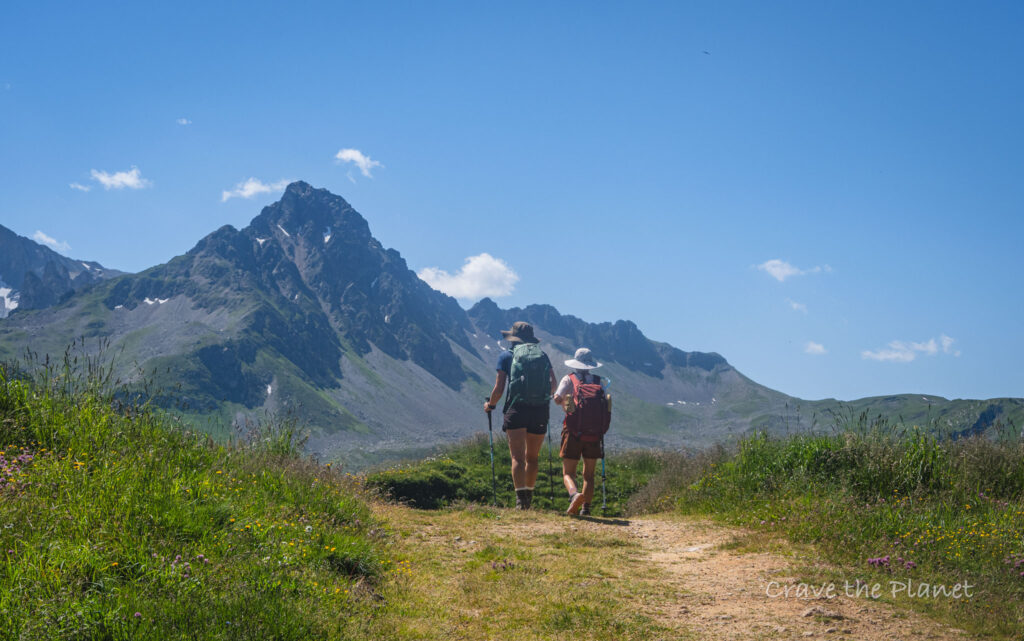
While planning your hike on Mont Blanc, you’ll find each season offers unique experiences along with its own set of challenges. From the vibrant wildflowers of spring to the stark beauty of alpine scenery in winter, it’s important to consider how seasonal variations can shape your trek.
Flora and Fauna
In spring, Mont Blanc’s trails are dotted with a variety of wildflowers such as alpine roses and edelweiss, offering a spectacular display. However, this is also a time when wildlife is most active, and you might encounter mountain goats, marmots, and chamois. Be mindful that while the fauna presents opportunities for wildlife viewing, it also requires you to give animals space and respect their habitats.
Landscape and Scenery
The landscape and scenery vary greatly throughout the year. Come summer, you’ll be welcomed with lush green valleys and panoramic views of quaint villages. The mountain passes are typically clear, and this is the prime time to witness the majestic alpine scenery without the hindrance of snow. On the other hand, autumn paints a picturesque setting with golden hues but also brings shorter days and the potential for early snowfall in high passes, which could affect visibility and trail access.
Weather Trends and Variability
Understanding the weather trends and variability is crucial for a safe journey. Summer offers ideal weather conditions with warm temperatures, although you may encounter occasional thunderstorms. By contrast, autumn sees cooler temperatures and an increased chance of rainfall. Early season hikers may still find snow on higher trails, which can pose the risk of avalanches. It’s essential to keep abreast of weather conditions before and during your trek to stay safe and avoid seasonal dangers.
Accommodation and Facilities Along the Trail
When embarking on the Tour du Mont Blanc, you will find a variety of accommodation options ranging from mountain huts to hotels, catering to different comfort levels and budgets. Know that facilities vary from basic to luxurious, ensuring a restful night after a day’s hike.
Mountain Hut Amenities
Mountain huts, or “refuges”, provide a quintessential hiking experience in the Alps. You can expect:
- Basic sleeping quarters: Dormitory-style beds or bunk beds with shared facilities.
- Food: Most huts serve home-cooked meals and have a communal dining area.
- Comforts amidst the wilderness: Some huts go beyond basics, offering hot showers and even Wi-Fi connections.
Please note that the remoteness of these huts often dictates the level of amenities you can expect.
Hotels and Alternative Lodging
If you’re after a touch of comfort or privacy, various hotels and alternative lodging options are available:
- En-suite rooms: Many offer private bathrooms for added comfort.
- Lodging flexibility: Choose from the luxury of five-star hotels to quaint inns and family-run guesthouses.
- Personalized stays: Tailor your accommodation to your preferences and budget.
Whether in a valley town or a smaller community, you’ll find lodging to rejuvenate before the next day’s hike.
Camping Areas and Bivouac Sites
For those who prefer to camp:
- Designated camping areas: These typically offer basic amenities like toilet facilities and sometimes showers.
- Bivouac sites: For a closer-to-nature experience, these are more rudimentary and usually located near refuges.
- Respect regulations: Always adhere to local guidelines on camping to preserve the pristine environment.
Camping offers flexibility and the chance to truly immerse yourself in the stunning alpine landscapes.
Logistical Planning for Mont Blanc Hike
When undertaking the Mont Blanc trek, thorough logistical planning is essential. The key elements include securing your accommodations well in advance and understanding your options for local transportation around the region.
Making Reservations for Accommodations
Begin your planning by booking accommodations for the duration of your hike. Due to the popularity of the Tour du Mont Blanc, it is imperative that you book your refuges, huts, or hotels months ahead of your trip, especially if you’re hiking in the peak season between June and September. You have a range of options from full-service hotels to basic mountain huts, with varied levels of comfort and amenities.
- Refuges/Mountain Huts: Offer communal sleeping areas; meals often included.
- Hotels: Provide private rooms; more amenities and higher comfort level.
Arranging Local Transportation
Next, consider how you’ll navigate local transportation. Your starting point is typically Chamonix, and from there, you’ll rely on a mix of buses, trains, and sometimes taxis to move between different sections of the trail or to return to your starting point after the hike.
- Buses: Connect major towns; schedules are seasonal.
- Trains: Useful for longer distances between certain towns; scenic routes.
- Taxis: Available for more direct or off-schedule travel; can be reserved in advance.
Remember, your timing needs to sync with public transport schedules, which can sometimes be limited, so always check the latest timetables.
Health and Safety on Mont Blanc
When planning your hike up Mont Blanc, your health and safety are paramount. In high-altitude environments, you must be aware of the specific risks associated with altitude sickness and the unpredictable nature of the terrain, which can lead to accidents.
Dealing with Altitude and Health Risks
Altitude sickness is a not a significant concern when ascending Mont Blanc. The higher you go, the less oxygen there is available in the air, which can result in symptoms like headache, nausea, dizziness, and, in severe cases, life-threatening conditions such as high altitude pulmonary edema (HAPE) or high altitude cerebral edema (HACE).
Managing Risks and Preventing Accidents
Your safety on Mont Blanc hinges on preparation and respect for the mountain’s challenges:
- Stay informed of the weather conditions; sudden changes in weather can increase the risks of avalanches and other dangerous situations.
- Ensure you have the necessary safety equipment, including a helmet, crampons, and an ice axe, and know how to use them effectively.
- Familiarize yourself with the signs of an avalanche—cracks in the snow surface, whumping sounds, heavy snowfall, or rain on new snow—and know the correct actions to take if one occurs.
- Always hike with a partner or in a group and inform someone about your plans and expected return time.
Remember, safety on Mont Blanc starts with thorough preparation and an awareness of the health risks and safety challenges posed by the mountain. Stay vigilant, stay informed, and enjoy your adventure with the confidence that comes from knowing you are well-prepared.
Cultural and Historical Aspects of Mont Blanc Region
The Mont Blanc region, with its rich tapestry of culture and mountaineering history, beckons you to experience its unique local customs and historical significance across France, Italy, and Switzerland.
Local Culture and Customs
You will discover that the Mont Blanc region is a melting pot of French, Italian, and Swiss influences, each adding distinct flavors to the local culture. Traditional alpine foods such as fondue, raclette, and polenta highlight the regional cuisine, offering you a taste of the diverse culinary heritage. Festivals and music are integral to local customs, with events like the Cosmo Jazz Festival enhancing the cultural landscape and providing a vibrant backdrop to your hiking adventure.
History of Mountaineering in Mont Blanc
Mountaineering here is not merely a sport; it’s a part of the historical fabric of the region. The history of mountaineering in Mont Blanc is illustrious, with the first recorded ascent by Jacques Balmat and Michel Paccard in 1786. This pivotal event marked the birth of mountaineering and placed the region firmly in the annals of adventure history. Today, you are following in the footsteps of brave pioneers who shaped mountaineering as a discipline and transformed the Mont Blanc massif into a symbol of human ambition and exploration.
Concluding Advice for Mont Blanc Hikers
In rounding up your Mont Blanc adventure, it’s imperative you’re well-prepared and ready to immerse in the post-hike camaraderie unique to this experience.
Final Tips and Recommendations
- Preparation: Ensure you’re physically and logistically prepared for the hike, considering factors such as the best time to hike Mont Blanc which typically falls in the summer.
- Equipment: Invest in good quality hiking boots and poles, and be aware of the snow conditions at higher altitudes in the spring.
- Pacing: Remember that the Tour du Mont Blanc can be completed at various paces; choose one that aligns with your ability and preference.
- Accommodation: Plan your stays, whether in mountain huts or hotels, and book in advance, especially during peak season.
- Safety: Always prioritize safety over summiting; weather conditions can change rapidly.
Post-Hike Reflections and Community
- Sharing Your Story: Engage with the hiking community to share your experiences and listen to others, possibly giving you insights for future adventures.
- The Bucket List: Crossing Mont Blanc off your bucket list is a monumental achievement; reflect on your journey and consider documenting it in a hiking log or a blog.
- Staying Connected: Maintain the bonds you’ve built with fellow hikers and stay connected through online forums, social gatherings, and planning future hikes together.
Hiking Mont Blanc is as much about the journey as it is about the destination. Treasure your time on the trails and embrace the memories and friendships you’ll forge along the way.
Frequently Asked Questions
When planning your Tour du Mont Blanc experience, understanding the specifics can make or break your trek. These FAQs aim to give you clarity on the ideal times, the preparation necessary, and what to expect during your adventure.
What is the ideal season for trekking the Tour du Mont Blanc?
The best time to hike Mont Blanc is typically between July and August. During these months, you’ll enjoy clear trails and mild weather, making the experience more enjoyable. However some hike in June and September but with more challenging weather conditions.
How many days are needed to complete the Tour du Mont Blanc circuit?
Completing the Tour du Mont Blanc circuit usually takes about 10 to 14 days, though this can vary based on your pace and the exact route you choose.
What are the challenges of hiking Mont Blanc for beginners?
Beginners may find the elevation gain and loss of around 32,800 feet to be a challenge, along with the variable weather and the need for proper acclimatization.
Is it advisable to hike Mont Blanc without a guide?
Hiking without a guide is possible if you have experience and are well-prepared, but those new to alpine trekking should consider a guided tour for safety and navigation purposes.
What is the total distance of the Tour du Mont Blanc hike?
The Tour du Mont Blanc covers a total distance of roughly 170 kilometers or 105 miles, encircling the Mont Blanc Massif.
Are there specific months to avoid when planning a hike on Mont Blanc due to weather conditions?
You should avoid the off-season months, especially from November to early May, due to heavy snowfall and potential avalanche risks on the mountainous trails.
Planning your trip?
- 🏨 Book your perfect stay on Booking.com
- 🎢 Make your trip more exciting with GetYourGuide
- 🚗 Hire a car with Discover Cars
- ✈️ Find cheap flight tickets with WayAway
- 📲 Buy eSIMs with Airalo
- 🥾 Get off the beaten tourist path with Fully Planned and Booked Self-Guided Hut to Hut Hiking Trip
- 🥾⭐️ Step into social adventure with Guided Group Adventure and Hiking Tours in Europe with Local Guides.
More Tour du Mont Blanc Travel Blogs
We hope this guide on the best time to hike Mont Blanc has given you the proper information to plan your visit to this incredible trek.

Author profile: Morgan Fielder is a Doctor of Physical Therapy and passionate hiker who believes in exploring the world on foot with good food. Follow her journey as she shares science-based hiking tips and advocates for sustainable tourism.

